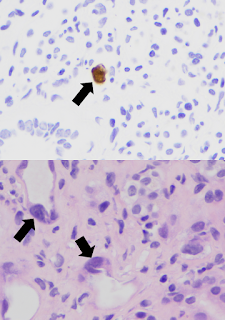The ELITE-Symphony study enshrined standard triple therapy immunosuppression of tacrolimus, mycophenolic acid and prednisolone, for renal transplant recipients. We get familiar with these agents relatively quickly in our renal training, but what about the other less common agents that are used? Why do we not use them as first line, when should we consider them and what side effects do we need to be aware of?
Sirolimus and everolimus are mTOR inhibitors (see previous RFN post), and prevent cell cycle progression and lymphocyte proliferation. Their anti-proliferative effects mean they have a role in conditions such as tuberous sclerosis, psoriasis and certain cancers. The antiproliferative and antiangiogenic effects pose issues post-surgery however with poor wound healing and lymphocele formation meaning they should not be used for around 6 months post-transplant. Other side effects include pneumonitis, hyperlipidaemia, bone marrow suppression, thrombotic microangiopathy and proteinuria due to FSGS-type lesions. Alongside this relatively long list of side effects, the main concern with sirolimus is related to mortality. A meta-analysis of 21 studies with a total of 5876 patients showed sirolimus was associated with increased mortality post-transplant, mainly from cardiovascular and infectious complications (adjusted hazard ratio 1.43, 95% CI 1.21-1.71). So why do some patients end up on sirolimus? The same meta-analysis showed that sirolimus is associated with a 40% reduced risk of malignancy, particularly in non-melanoma skin cancers. The most common reasons for switching to mTORi are malignancy, often recurrent skin cancers, and for calcineurin-inhibitor (CNI) induced injury (although if eGFR<40mls/min or overt proteinuria outcomes are likely to be poor or no better with a switch). Moreover, as seen in ELITE-Symphony and other, acute rejection rates and patient dropouts are consistently higher with mTORi compared to CNIs.
The BENEFIT and BENEFIT-EXT (extended criteria donors) trials compared high and low intensity belatacept regimes with cyclosporine in non-sensitised recipients undergoing DBD or living donor renal transplants. Over 7 years of follow-up, they found improved patient and graft survival with belatacept in BENEFIT and better measured GFR and reduced formation of DSA with belatacept in both studies. There was an increased incidence of acute rejection in BENEFIT although this obviously didn’t translate into inferior outcomes. There were also initial concerns regarding a small increase in cases of PTLD in EBV seronegative recipients although longer term data was reassuring that the overall risk of this was very low.
A potential benefit of belatacept is it’s a directly observed therapy, so compliance will be known. Although it is expensive, if patients experience improved graft outcomes then any longer term savings need to be considered. However what about patients who are highly sensitised? Many patients we want to avoid CNIs in are sensitised but here is a dearth of data in using belatacept in this circumstance. Moreover, the studies compared belatacept to cyclosporine, not tacrolimus, the current standard of care. Currently belatacept is not available for new patients due to supply issues, another issue likely preventing its more widespread use.
Post by Ailish Nimmo




































